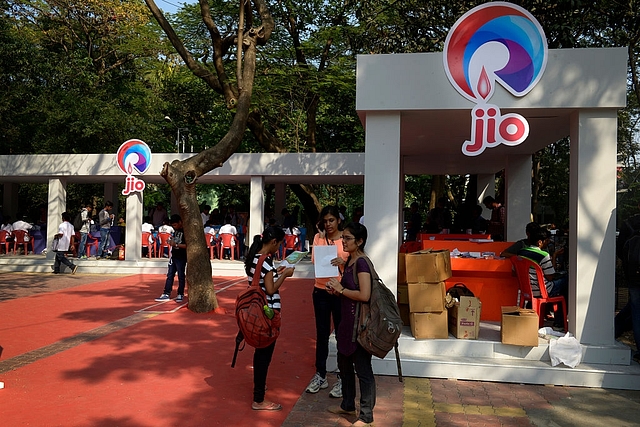
Reliance Jio Catches-Up With Bharti Airtel: Records Rise In Revenue Market Share For Sixth Consecutive Quarter
Mukesh Ambani led Reliance Jio rose in its revenue market share (RMS) for the sixth consecutive quarter, the Telecom Talk reports. During the same time, Vodafone-Idea Limited (VIL) has lost out its subscribers and revenue market share, hinting that latest telecom entrant's gain is at the cost of VIL’s loss in RMS.
Since 2017, VIL's RMS has dipped almost 10 per cent points while Reliance Jio’s rose by almost the same. According to a Bloomberg Quint report, since the beginning of FY 2018 (in the same period), Bharti Airtel’s RMS fell by only 4 per cent. Reliance Jio now boasts of having a 30 per cent RMS.
The Revenue Market Share is calculated based on the adjusted total revenue, which also factors interconnection charges along with various other deductions. The Telecom Regulatory Authority of India (TRAI) gives the crucial metric and also includes national long-distance revenue.
When the long distance revenue is not considered, the revenue market share of Jio stands at 38.1 per cent, more than any other telco in the country currently. The reason is that Reliance Jio's value in the long distance income is not at all substantial against other telcos and since it is a data-driven network.
The reason for Bharti Airtel and Vodafone Idea losing subscribers is the introduction of the minimum recharge plans to increase their average revenue per user (ARPU), a pivotal industry parameter. The telecom companies also lost about eight crores low paying customer in their pursuit to focus more on their high paying consumers.